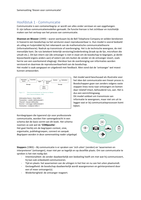Tentamen (uitwerkingen)
MAPPING GREEK HISTORY: HISTORICAL QUESTIONS WITH GEOGRAPHICAL ANSWERS
- Vak
- Instelling
relevant sites, but also developed slideshows with images illustrating each site. Links to the slideshows were embedded into the GIS map, so zooming in could lead to a click that opened pictures of the site in question. Although much of the result could still have been achieved without GIS, the ...
[Meer zien]












